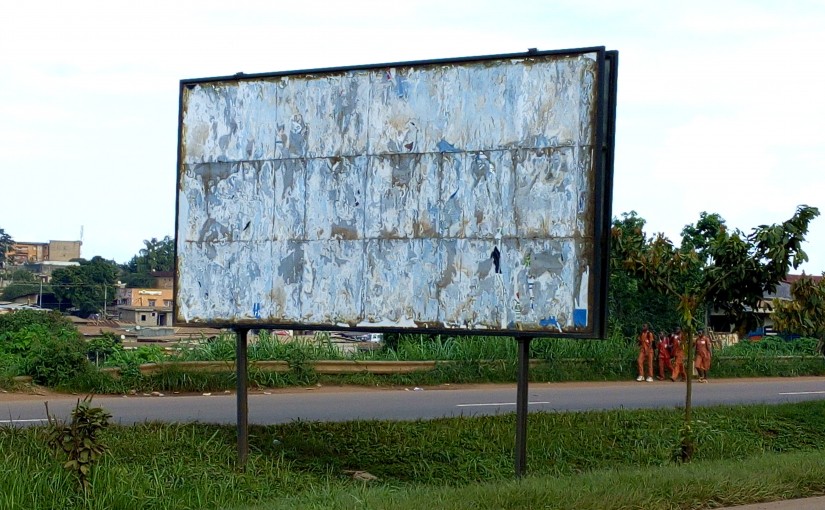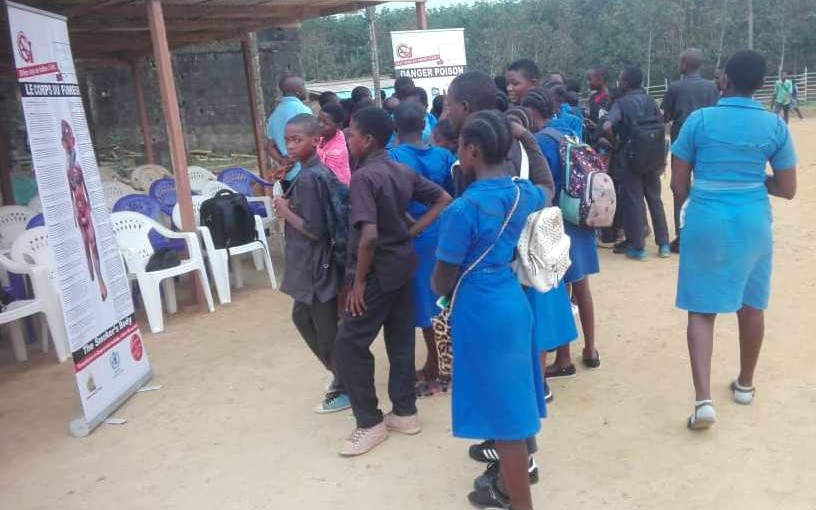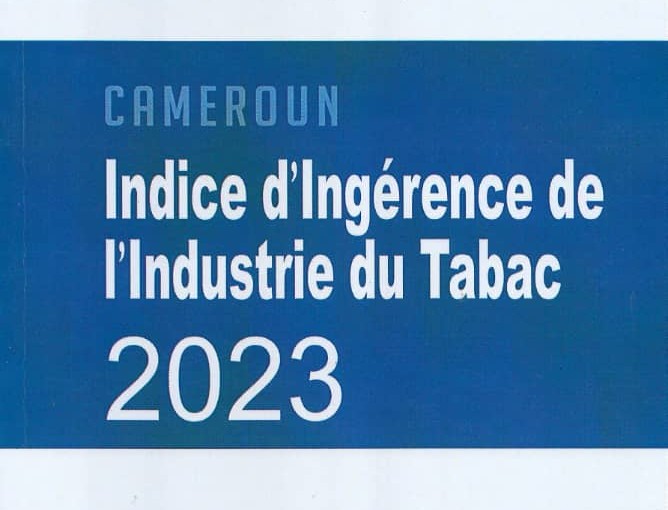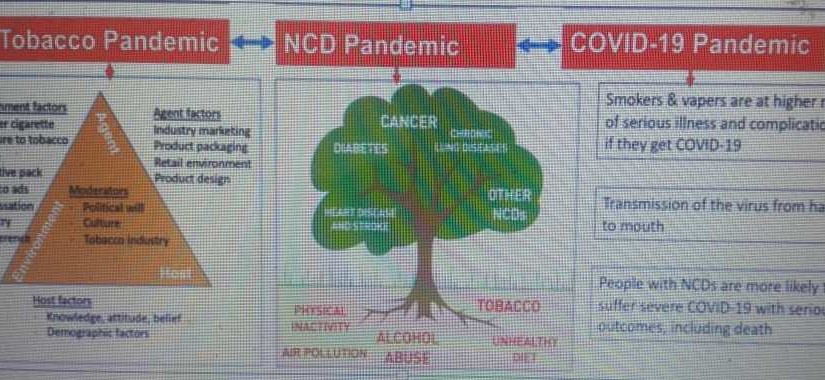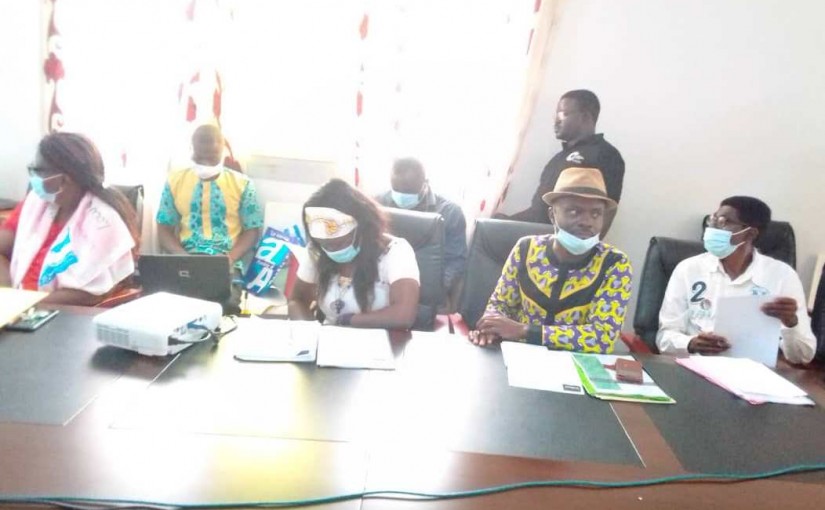In the frame of its tobacco control activities against anti-tobacco, the Cameroon Coalition for Tobacco Control (C3T), organized an information meeting and exchange with journalist exercising in the town of Ebolowa , which is the chief town of the south region , on Wednesday the 15th of November 2017.
This activity named'' media dialogue'' was held in the conference room of the regional delegation of the ministry of tourism and leisure. On this special occasion more than thirty journalists from different media organs such as radio, TV, print media and online media from both public and private communication in Cameroon were present to get acquainted with information linked to tobacco. All invited journalists declared at the beginning of the session they've never written any article related to tobacco due to lack of interest via the topic or because of lack of information
Whereas, they get to witness the intense activities of the industry in their locality. Ebolowa, which is a border town, shares its frontiers with Gabon an Equatorial Guinea and has got many tobacco sales points. And most of these products are from smuggling, since they've got no vignette established by the fiscal administration to promote the traceability of such products. The capital of the south region has known a strong publicity and promotion of tobacco with small posters placed on kiosks and call- box here and there
The town of Ebolowa is known for its selling of tobacco near school premises. All these activities go a long way in the violation of the national legislation which was observed right at this point with little or no interest to journalist who have got a major role in the sensitization and education of the people. This is the reason why C3T went a long way to better equipped and give them the knowledge about de tobacco control so that they could contribute in their own way in the fight against tobacco through the use of information. This is the main point behind the media dialogue ‘' the point was to better edify men and women of the media on the different issues link to the fight against tobacco and on the dangers of tobacco. Across their writings and productions, journalists are expected to better educate the public on the harmful effects of tobacco and draw the attention of decision-makers to the need and the urgency to adopt the regulations on the Graphic Health Warnings of tobacco product packaging, the creation of 100% non-smoking spaces, the complete prohibition of all forms of advertising, promotion and sponsorship for products tobacco to protect young people from the aggressive marketing of the tobacco industry.
To do this, they were imbued with the prevalence of adult smoking and youths, the results from the survey carried out on the activities of the tobacco industry around school premises with the emergency to protect school environment, international and national judicial dispositions on publicity, the promotion and sponsorship of tobacco and tobacco products.
The Ebolowa meeting was equally an opportunity to better explain to journalists the dangers link to the usage of tobacco, share and exchange with them about the main provisions of the WHO Framework Convention on Tobacco Control (FCTC) and the outline of a national anti-smoking law in line with the FCTC.
The media dialogue of Ebolowa which follows those of Yaoundé, Ngaoundéré, Bafoussam, Bertoua and Douala is part of the activities that fall in line with the traditional come together between C3T and the national press. It comes in the context of a global epidemic of smoking, which also concerns Cameroon.
Note should be taken that, tobacco kills more than 7 million persons in the world each year. More than 6 million of them are consumers or former consumers, and about 890,000 non-smokers involuntarily exposed to smoke. If nothing is done, this number could reach more than 8 million by 2030 and over 80% of smokers live in low- and middle-income countries like Cameroon.
In Cameroon, according to results on the survey carried out by the global investigation on tobacco in adults, which was carried out in 2013 by the National Institute of Statistics in collaboration with the Ministry of Public Health, 1, 1 million of adults which is 8, 9% of the population, uses tobacco products and close to 7 million of Cameroonians are expose to the smoke of tobacco in public places and houses.
In the youth population, a survey carried out in 2014 in Cameroon shows 300,000 youths aged between 13-15 years who consume dangerous and poisonous products. The implementation of the WHO framework convention guidelines can able to reverse this tendency. Hence the importance of raising public awareness and advocacy with the authorities that leads C3T on the sideline of its traditional exchange with the media.
The purpose of this meeting is to build media men and women on various issues related to tobacco control and to enable them to better educate the public on the harmful effects of tobacco and draw the attention of decision-makers to the issue of tobacco control. the need and the urgency to adopt the regulations on the Graphic Health Warnings of tobacco product packaging, the creation of 100% non-smoking spaces, the complete prohibition of all forms of advertising, promotion and sponsorship for products tobacco to protect young people from the aggressive marketing of the tobacco industry.
Specifically, it will be an occasion to present to journalists the prevalence of smoking among adults and young people, the results of the pilot survey on the activities of the Tobacco Industry around schools with the urgency to protect the school domain, international and national legal provisions on advertising, promotion and sponsorship of tobacco and tobacco products.
The Ebolowa meeting also aims to explain to journalists the dangers of tobacco use, share and exchange with them about the main provisions of the WHO Framework Convention on Tobacco Control (FCTC) and the outline of a national anti-smoking law in line with the FCTC.
The meeting which follows those of Yaoundé, Ngaoundéré, Bafoussam, Bertoua and Douala is part of the traditional meetings between the C3T and the national press. It comes in the context of a global epidemic of smoking, which also concerns Cameroon.
Smoking kills more than 7 million people worldwide each year. More than 6 million of them are consumers or former consumers, and about 890,000 non-smokers involuntarily exposed to smoke. If nothing is done, this number could reach more than 8 million by 2030 and over 80% of smokers live in low- and middle-income countries like Cameroon.
In Cameroon, according to the results of the Global Survey on Adult Smoking (GATS) conducted in 2013 by the National Institute of Statistics in collaboration with the Ministry of Public Health, 1.1 million adults, or 8.9% of the population use tobacco products and nearly 7 million Cameroonians are exposed to tobacco smoke in public places and households. In young people, the 2014 studies in Cameroon report 300,000 young people between the ages of 13 and 15 who regularly consume these dangerous and deadly products.
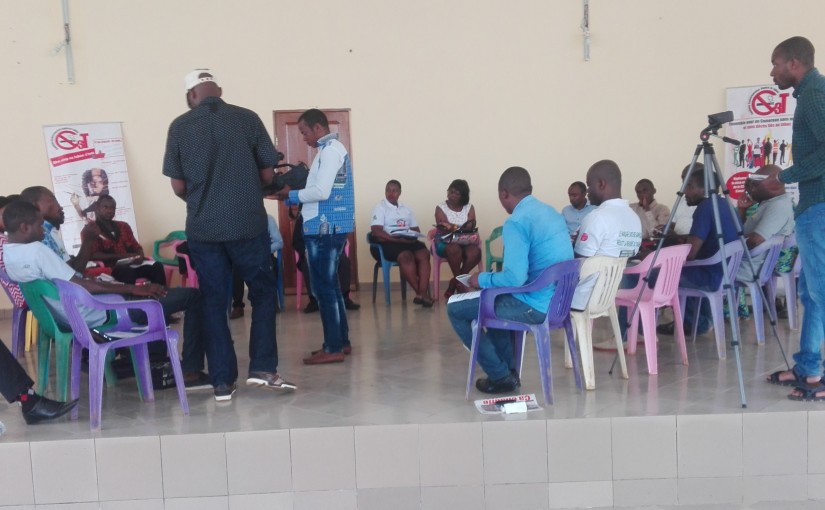
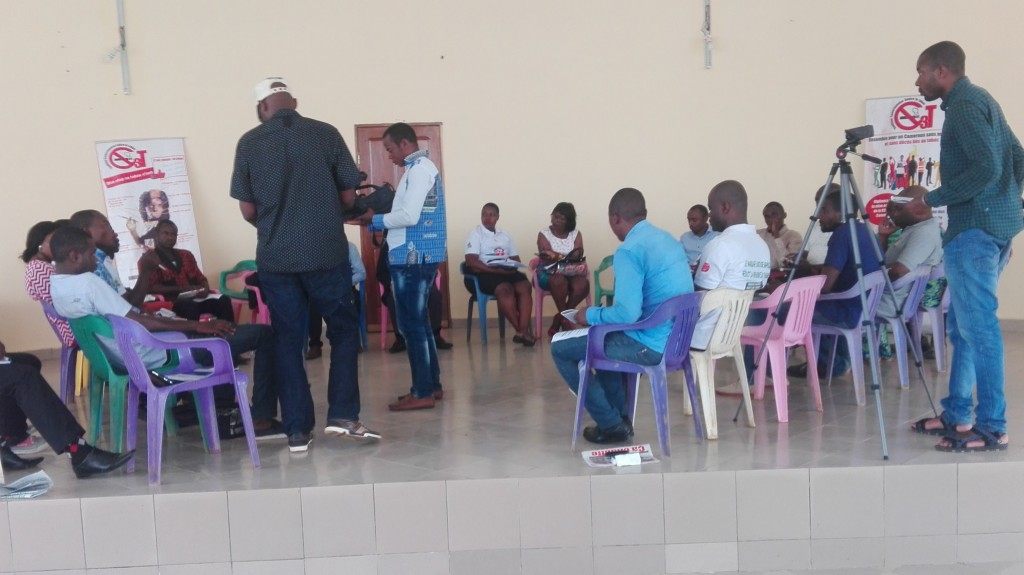
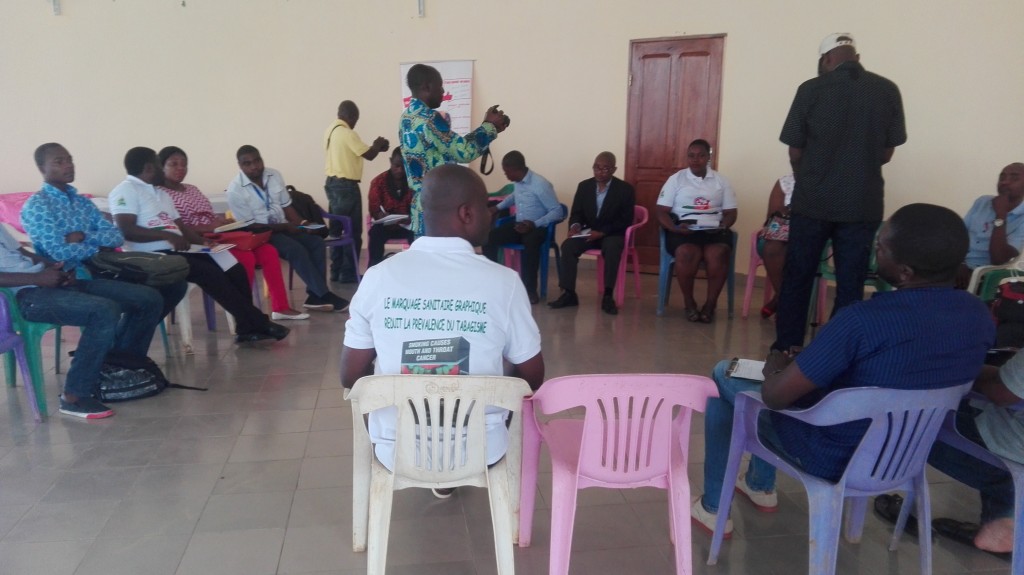
 (
( (
(